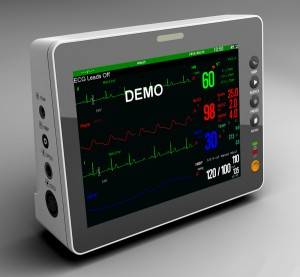The electrocardiogram monitor is an important tool for medical care at present. Whether it is an intensive care unit or a general ward, it is generally equipped with this kind of equipment.
The main purpose of the ECG monitor is to detect and display the ECG signal generated by the patient’s heart pulse. The internal circuits of the ECG monitor machine are rarely damaged. Most of the problems are the ECG lead wires, ECG electrodes and settings.

1. The setting error of the ECG monitor: Generally, the lead wires of the ECG monitor have 3 leads and 5 leads. If the setting is wrong, the waveform cannot be displayed or the waveform is inaccurate. Therefore, when the ECG monitor has no ECG signal or the waveform is inaccurate, first check whether the setting of the machine is correct. In addition, most monitors have digital filtering functions that can filter power frequency interference. Most ECG monitors have two filter frequencies, 50 and 60HZ, so that the machine can be used in different regions.
2. The ECG lead wire is broken: The most direct way to measure whether the ECG lead wire is broken is to use a multimeter. Usually the ECG monitor cannot display the ECG waveform as long as one of the heart wires is broken. The instrument can press the electrode end of the ECG lead to the finger. If the monitor can display the noise waveform, then the ECG lead is connected. If the ECG signal is not detected, the ECG lead is probably broken.
3. the problem of the ECG electrode sheet: The quality of the ECG electrode is not good, and the wrong position will make the electrocardiograph fail to measure the ECG signal or the measured signal is incorrect. If there is no problem with the monitor settings and the ECG lead wire, it is the ECG electrode problem. Many nurses nowadays have poor skills, and usually they can’t stick even an ECG electrode. The correct method of applying ECG electrodes is to use the small sandpaper on the ECG electrodes to gently rub the stratum corneum on the patient’s skin. A little saline. (Imported ECG electrodes usually do not have sandpaper, and they can be directly attached to the patient’s skin to get a good waveform, but the price is relatively high. The quality of domestic ECG electrodes may not be so good, so get a piece of sandpaper to resist it) In addition, the poor ground connection of the monitor will also cause a lot of interference, so a universal meter should be used to check the voltage of the ground wire to ensure that the ground wire is normal.
Post time: Jun-17-2021

